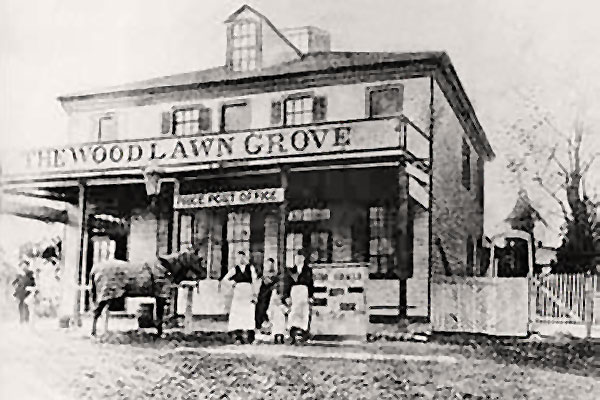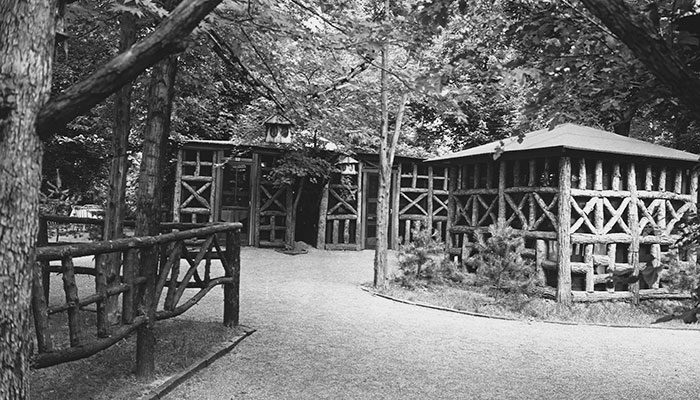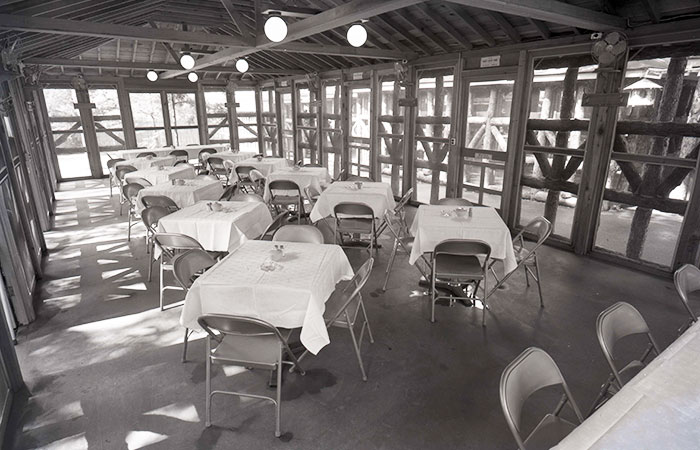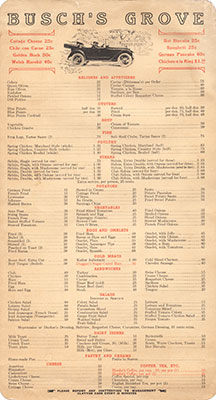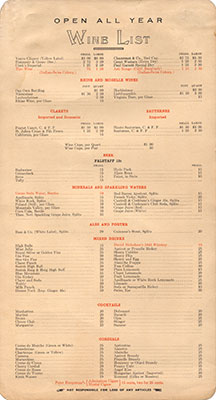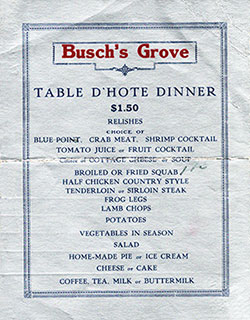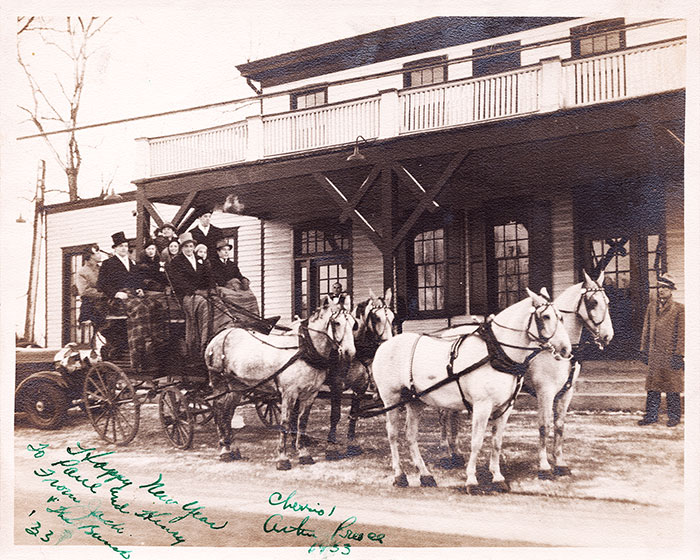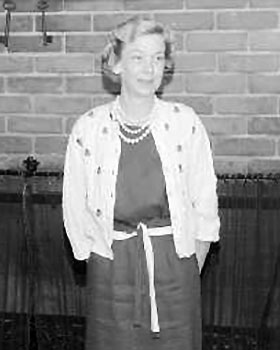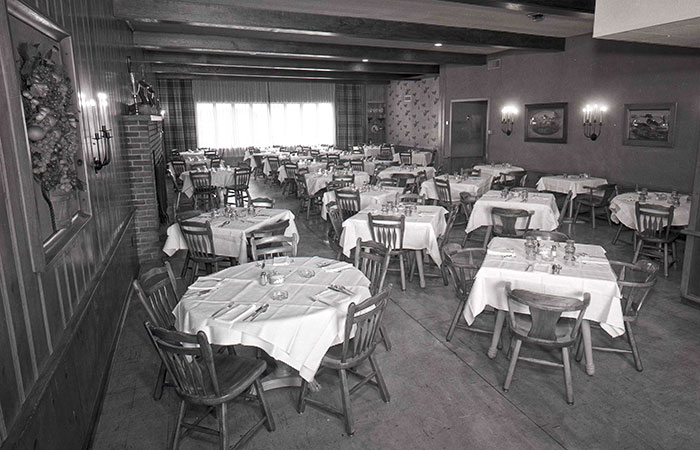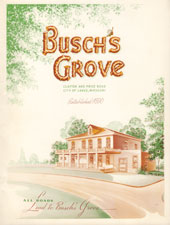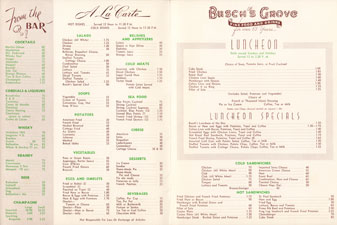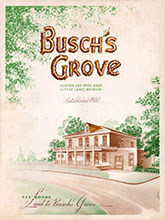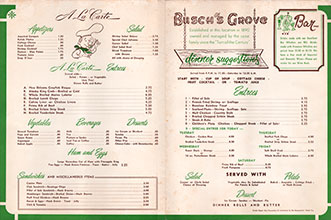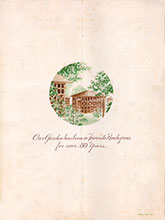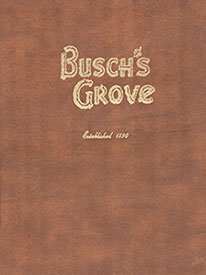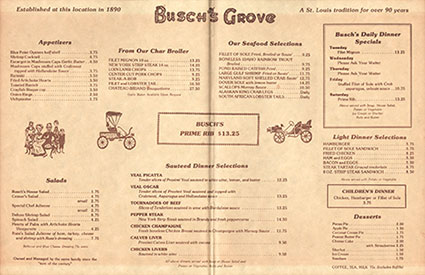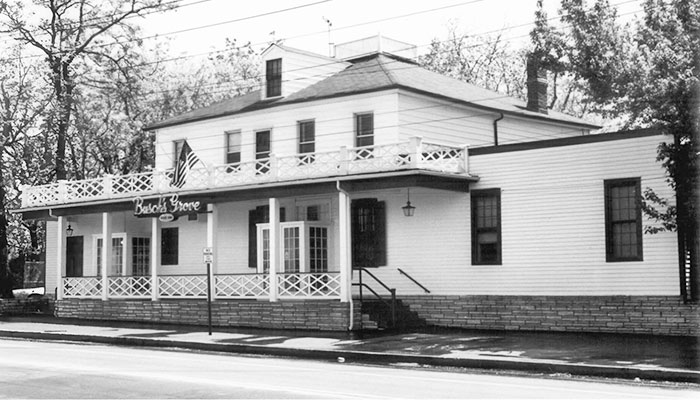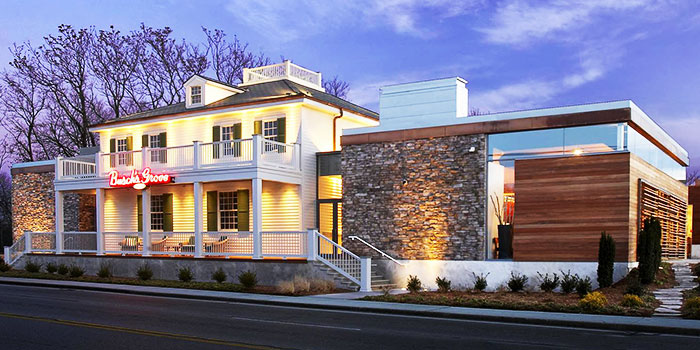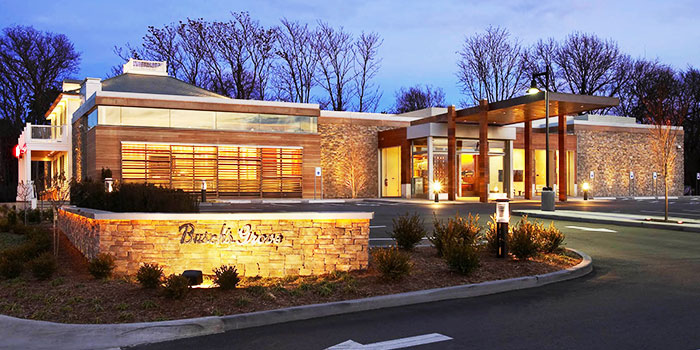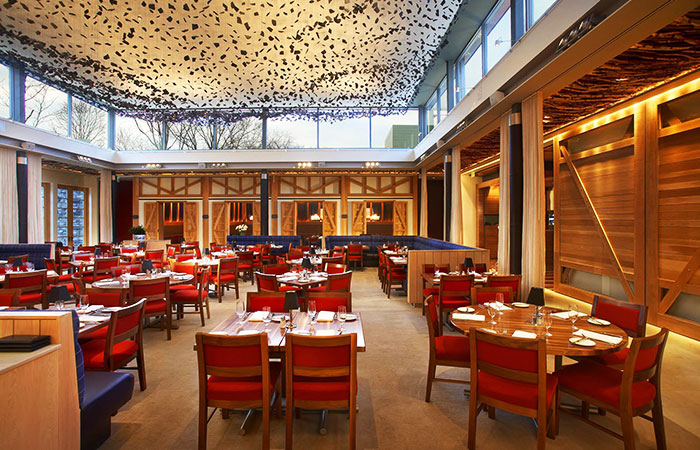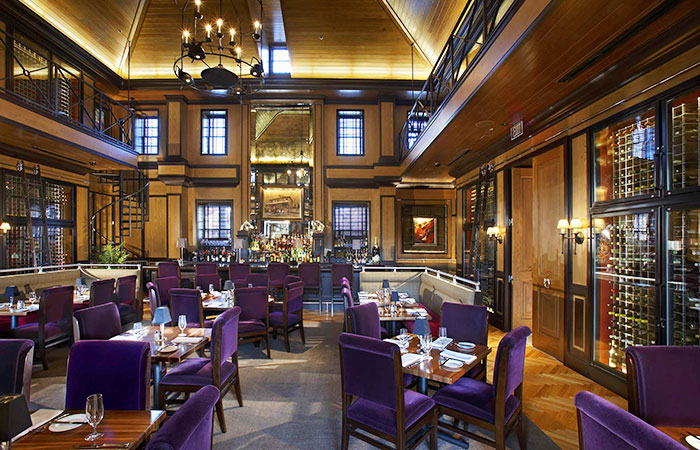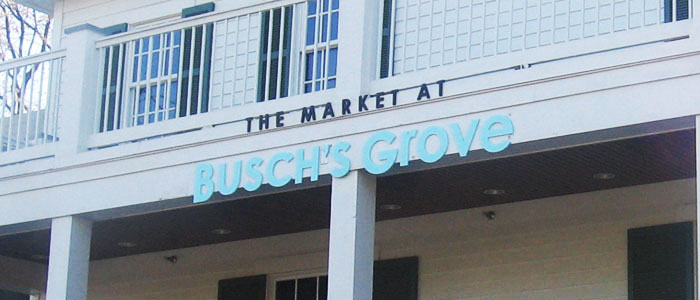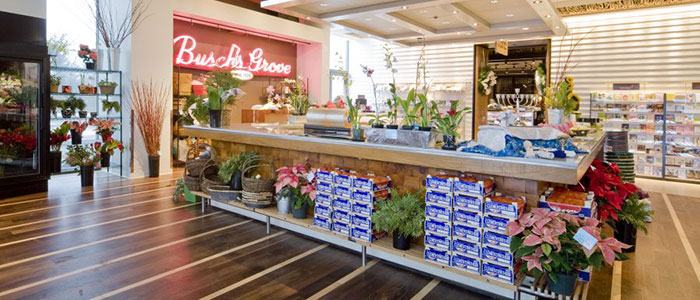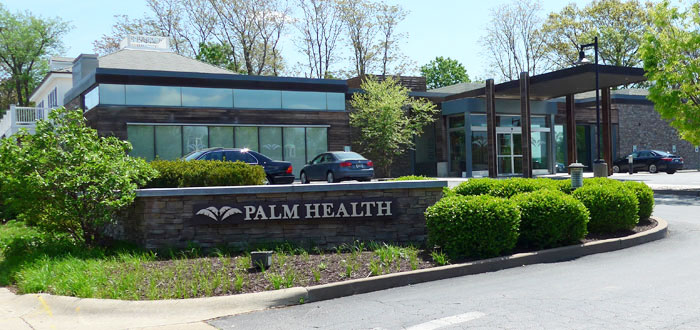|
Busch's Grove Busch's Grove was an unpretentious white frame roadhouse on Clayton Road at Price, in the city of Ladue. For years the name epitomized genteel, gracious dining in St. Louis. But the multicentury, multigenerational story that is Busch's Grove is as much about the building that housed the restaurant as it is about the restaurant itself. Nineteenth Century Origins Records show that John Philip Litzinger purchased the land on the south side of Clayton, just west of Price, from James S. Forsyth in 1855 for $1,000. Litzinger sold the property to John T. Harding in 1869 for $6,000. This increase in value suggests that Litzinger built the original frame structure on the property, which may have served as his blacksmith shop and a stagecoach stop.
Charles Robyn purchased the property in 1873
from John T. Harding for $4,500, using it as a roadhouse and public
garden. The establishment was known as Woodland Grove and housed the
Price Post Office, with Robyn appointed postmaster in 1889.
In March of 1891, Robyn sold the property to George Buente for $8,000. Buente, a wholesale grocer who owned real estate throughout the area, leased the property to John Busch. Busch's Grove John H. Busch was married on May 7, 1869 in Amsterdam, at age 23. On that day, he and his wife Mary Elizabeth started out for American and St. Louis. When Busch took over Woodlawn Grove in 1891, it was a combination restaurant, roadhouse, hostelry and resort. It still housed the Price Post Office; Busch was appointed postmaster in July of 1891. It took a few years for Woodlawn Grove to become Busch's Grove. The name was used interchangeably by the press.
Early on, screened log cabins were built on the acreage behind Busch's Grove. Initially they may have been used as rooms for Busch's roadhouse.
In time, the screened cabins were used for summer dining. A horse-and-buggy ride away from the city, they were the place to go to escape the heat. With the advent of air-conditioning, many were dismantled in the 1950s and 1960s. But they were rebuilt in the 1980s as a place to escape air conditioning.
Set among tall shade trees and beds of
geraniums and impatiens, the cabins were furnished with folding
chairs and tables, and covered with white cloths and napkins.
Overhead fans provided a breeze. At night, iron lanterns illuminated
the paths that separated the 20 cabins, which were designed to hold
from two to 70 people.
At the turn of the century, Busch's Grove served as a training site for out-of-town prize-fighters (1902), the destination for hayrides, moonlight picnics and dancing (1902), a saloon and outdoor grove for beer drinkers (1907), and a haven for late night poker gatherings (1908). During the 1904 World's Fair, parties were held for the noted Irish tenor John McCormack. And a balloonist named Roy Knobenshue bet his friends he could take off from Forest Park and land at the restaurant, which he did.
Busch's Grove was
never a hash house. The restaurant was known for the steaks
coming from its grill and the mint juleps served over its bar. A
dozen oysters were fifty cents, frog legs were seventy-five and a
sirloin steak with onions was a dollar. Because the restaurant was so far
out in the country, the streetcar schedule received space on the
menu. John Busch continued as proprietor of Busch's Grove until 1909, when his son Henry and a friend of the younger Busch, Paul Kammerer, took over management on the elder Busch's retirement. In 1916, Henry Busch and Paul Kammerer purchased the property consisting of 12.8 acres and improvements from the Buente estate for $26,000. Among the celebrity diners who visited Busch's Grove were Babe Ruth, Will Rogers, Charles Lindbergh, Theodore Roosevelt and Harry Truman. According to an anecdote, Lindbergh once approached Kammerer and asked where he could find the men's restroom. Kammerer replied, "Anybody who can find their way across the ocean to Paris can surely find the men's restroom." Busch and Kammerer extended credit to regular customers, providing them with "house checks" so they could "charge" their meal.
Henry Busch died on July 17, 1941 at the age of 62. He had been in poor health. His will contained a provision allowing a veteran waiter at the restaurant, Joseph Kartye, six months in which to buy Busch's interest in the restaurant. After that time the same privilege would be extended to Paul Kammerer. In the event neither man availed himself of the opportunity, Busch's share in the restaurant would remain with his wife. Paul Kammerer acquired Henry Busch's interest in Busch's Grove, ending the Busch family's involvement in the restaurant. Kammerer's ownership of the eatery would last only another ten years. On the night of July 10, 1951, at age 70, he died when he leaped from his sixteenth floor apartment at the Congress Hotel.
Ownership and management of Busch's grove
passed to Kammerer’s son, William, and to his his son-in-law,
Richard Conrad. When Conrad died in 1958, his share of the
restaurant passed to his wife, Paul Kammerer's daughter, Marianne,
who by 1960 had married Dr. Lawrence O'Neal.
In 1953, Busch's Grove was
remodeled, but the atmosphere of a small, friendly eating place
remained. The look was domesticated hunt club, with dark woods,
burgundies and hunter greens. Paintings of pheasants, ducks and
hunting dogs were displayed on the walls.
After the remodeling in 1953, an ad appeared in the October 16, 1953 St. Louis Globe-Democrat, announcing the restaurant's reopening.
The "famous Men's Bar" had remained unchanged since the restaurant's early days, including its columned back bar, its brass rail with marble baseboard, and a large glass-doored storage cabinet on the opposite wall. The New York Post's Earl Wilson took note in his August 27, 1970 syndicated column.
By the 1970s, while prices had increased on the Busch's Grove menu, much had stayed the same. St. Louis Post-Dispatch restaurant critic Joe Pollack captured the atmosphere in his October 16, 1974 review.
In 1982, Busch's Grove was placed on the National Register of Historic Places.
"Our good fortune is in large part entirely due
to our location," said Bill Kammerer. "The building has been kept
exactly as it was, but we've brought everything up to date in term
of safety and service."
In September of 1990, Busch's Grove caught the attention of "Roadfood" authors Michael and Jane Stern. In their "Taste of American" syndicated column, the Sterns captured the essence of the restaurant, including the mint juleps and the popular Russ's salad.
Bill Kammerer and Marianne O'Neill retired in 1996. Their sons-in-law, Carl Cowles and Bill Carter, took over ownership and management of Busch's Grove. The fourth generation owners faced a changing restaurant environment, with increasingly stiff and plentiful competition. The final paragraph of a February 14, 2002 review by Post-Dispatch restaurant critic Dru Thomas was telling.
Cowles and Carter closed Busch’s Grove on Valentine's Day 2003. Although the restaurant continued to draw crowds, they felt they weren't using the full potential of the property, which for tax purposes was valued at $1.45 million. As Cowles explained, "It's a prime location. We are sitting on a pretty good piece of land if we develop it." The New Busch's Grove Lester Miller moved to St. Louis from his native Brooklyn, New York at age 21 with a junior high school education and "with no assets except the clothes on my back." Over the next 40 years, Miller made his fortune manufacturing plastic containers, selling his business in 1998 for $300 million. In October 2003, Miller put Busch’s Grove under contract.
While Miller was "prepared to spend $4 million"
to rehabilitate the 150-year-old landmark, he reportedly spent $10
million. The New Busch’s Grove – Miller's Taj Mahal – opened for
dinner on Nov 22, 2005.
The entrance to the new restaurant was from the parking lot, through front doors fitted with Lalique crystal pulls. Upon entering, to the right was a sushi and raw bar. On the left was the bar area – a mingling section with banquettes and then the main bar, complete with bandstand.
Straight ahead was the Cove Room – a
spacious dining area ornamented with 8,500 pieces of Missouri
granite suspended from the ceiling by fishing line. To the side were four "cabins"
– private dining rooms for ten, behind unfinished barn-style doors.
The more formal
two-story
Grove Room was adorned with paintings and Baccarat crystal sculptures.
Glassed-in wine storage, climbing the from floor up to a catwalked
mezzanine, held 5,000 bottles of wine. The New Busch’s Grove seated 360 and had a staff of 140. Miller had opened the restaurant with veteran managers and a top chef from Miami. But reviews were mixed. On January 5, 2006, a two-page review by Post-Dispatch restaurant critic Joe Bonwich ended with a warning.
On January 12, 2006, Lester Miller took out a one-page ad in the Post-Dispatch responding to Bonwich's review. He thanked St. Louis for the "overwhelming success" of his restaurant, itemizing its accomplishments and accolades, and both apologizing for and defending its shortcomings.
Despite Miller's efforts, Busch's Grove struggled to make a profit. In April 2008, it was reported Miller was attempting to save the restaurant from closing by aligning with Tony’s Vince Bommarito.
On May 24, 2008, Lester Miller's dream came to an end and Busch's Grove closed its doors. The Market at Busch’s Grove On July 31, 2008, Lester Miller cut his losses and sold Busch's Grove to real estate developer Charles Cella, president of St. Louis based Southwestern Enterprises. Cella leased the property to Paul Poe, who had been the chief executive of Clayton based Straub’s Markets for 13 years. Poe converted the building into a high-end, gourmet grocery store, targeting the affluent Ladue neighborhood. Asked if he was concerned about opening in an economy in which even affluent shoppers were cutting back, Poe responded, "It’s probably not the best timing in the world, but it was the opportunity to transform this landmark space into a one-of-a-kind fabulous grocery store."
The
Market at Busch’s Grove opened in early December 2008. It was an
upscale, fresh-food market providing high quality cheeses, locally
made baked goods, rare wines, prime meats and seafood, fresh produce
and an extensive prepared food section.
But it was indeed not the best timing for Poe and his one-of-a-kind fabulous grocery store. A victim of the recession, The Market at Busch's Grove closed on January 8, 2011. Twenty-First Century and Beyond With the Busch's Grove space once again empty, it became sexy for restaurateurs to be linked to the white-frame building at 9160 Clayton Road in Ladue. In July 2011, The Gabriele family, owners of Giovanni's and Il Bel Lago, announced they would run a restaurant in the landmark space. In October 2011, Vince Bommarito’s son James talked to the Cella family about moving Tony’s into the shuttered Market at Busch’s Grove. And in December 2012, EdgeWild Restaurant announced it would open a second location in the vacant building the following summer. But the onetime stagecoach stop, post office, roadhouse, resort, restaurant and market remained lifeless. And then, in early 2016, the transcendent building assumed a new identity – Palm Health.
Copyright © 2024
LostTables.com |


